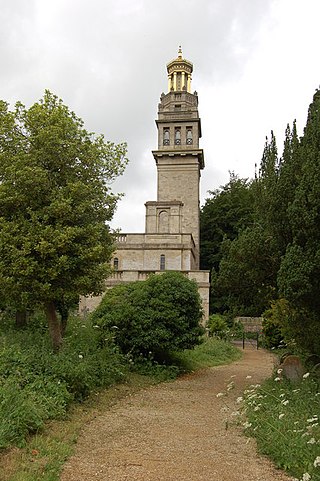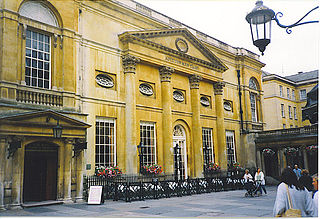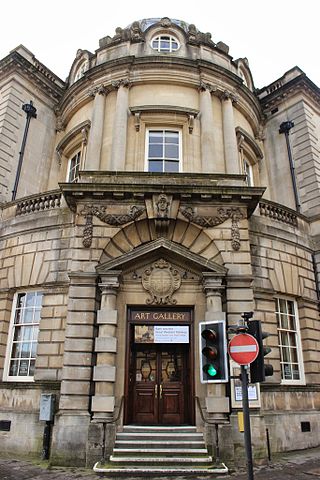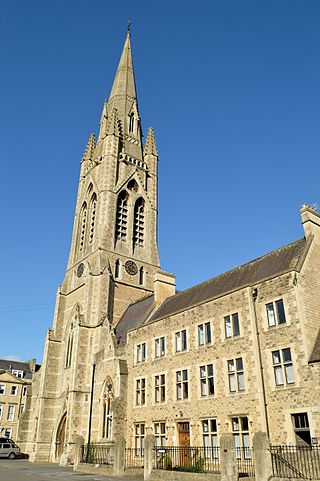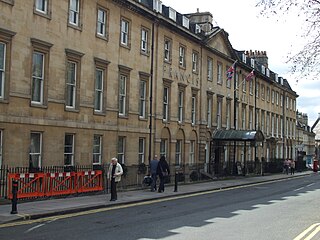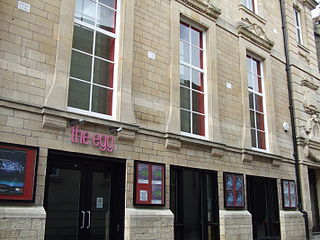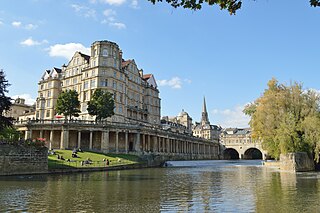24 Sights in Bath, United Kingdom (with Map and Images)
Legend
Welcome to your journey through the most beautiful sights in Bath, United Kingdom! Whether you want to discover the city's historical treasures or experience its modern highlights, you'll find everything your heart desires here. Be inspired by our selection and plan your unforgettable adventure in Bath. Dive into the diversity of this fascinating city and discover everything it has to offer.
Sightseeing Tours in BathActivities in BathPulteney Bridge is a bridge over the River Avon in Bath, England. It was completed by 1774, and connected the city with the land of the Pulteney family which the family wished to develop. Designed by Robert Adam in a Palladian style, it is highly unusual in that it has shops built across its full span on both sides. It has been designated as a Grade I listed building.
Prior Park Landscape Garden surrounding the Prior Park estate south of Bath, Somerset, England, was designed in the 18th century by the poet Alexander Pope and the landscape gardener Capability Brown, and is now owned by the National Trust. The garden was influential in defining the style known as the "English landscape garden" in continental Europe. The garden is Grade I listed in the Register of Historic Parks and Gardens of special historic interest in England.
Prior Park is a Neo-Palladian house that was designed by John Wood, the Elder, and built in the 1730s and 1740s for Ralph Allen on a hill overlooking Bath, Somerset, England. It has been designated as a Grade I listed building.
The Roman Baths are well-preserved thermae in the city of Bath, Somerset, England. A temple was constructed on the site between 60 and 70 AD in the first few decades of Roman Britain. Its presence led to the development of the small Roman urban settlement known as Aquae Sulis around the site. The Roman baths—designed for public bathing—were used until the end of Roman rule in Britain in the 5th century AD. According to the Anglo-Saxon Chronicle, the original Roman baths were in ruins a century later. The area around the natural springs was redeveloped several times during the Early and Late Middle Ages.
The Abbey Church of Saint Peter and Saint Paul, commonly known as Bath Abbey, is a parish church of the Church of England and former Benedictine monastery in Bath, Somerset, England. Founded in the 7th century, it was reorganised in the 10th century and rebuilt in the 12th and 16th centuries; major restoration work was carried out by Sir George Gilbert Scott in the 1860s. It is one of the largest examples of Perpendicular Gothic architecture in the West Country. The medieval abbey church served as a sometime cathedral of a bishop. After long contention between churchmen in Bath and Wells the seat of the Diocese of Bath and Wells was later consolidated at Wells Cathedral. The Benedictine community was dissolved in 1539 during the Dissolution of the Monasteries.
The Bath Assembly Rooms, designed by John Wood the Younger in 1769, are a set of assembly rooms located in the heart of the World Heritage City of Bath in England which are now open to the public as a visitor attraction. They are designated as a Grade I listed building.
Wikipedia: Bath Assembly Rooms (EN), Website, Heritage Website
Queen Square is a square of Georgian houses in the city of Bath, England. Queen Square is the first element in "the most important architectural sequence in Bath", which includes the Circus and the Royal Crescent. All of the buildings which make up the square are Grade I listed.
The Jane Austen Centre at 40 Gay Street in Bath, Somerset, England, is a permanent exhibition which tells the story of Jane Austen's Bath experience, and the effect that visiting and living in the city had on her and her writing.
The Royal Crescent is a row of 30 terraced houses laid out in a sweeping crescent in the city of Bath, England. Designed by the architect John Wood, the Younger, and built between 1767 and 1774, it is among the greatest examples of Georgian architecture to be found in the United Kingdom and is a Grade I listed building. Although some changes have been made to the various interiors over the years, the Georgian stone facade remains much as it was when first built.
Royal Victoria Park is a public park in Bath, England. It was opened in 1830 by the 11-year-old Princess Victoria, seven years before her ascension to the throne, and was the first park to carry her name. It was privately run as part of the Victorian public park movement until 1921, when it was taken over by the Bath Corporation.
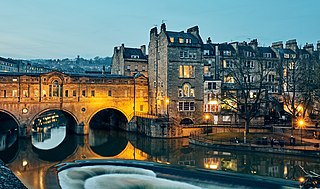
Bath is a city in Somerset, England, known for and named after its Roman-built baths. At the 2021 Census, the population was 94,092. Bath is in the valley of the River Avon, 97 miles (156 km) west of London and 11 miles (18 km) southeast of Bristol. The city became a UNESCO World Heritage Site in 1987, and was later added to the transnational World Heritage Site known as the "Great Spa Towns of Europe" in 2021. Bath is also the largest city and settlement in Somerset.
Thermae Bath Spa is a combination of the historic spa and a contemporary building in the city of Bath, England, and reopened in 2006. Bath and North East Somerset council own the buildings, and, as decreed in a Royal Charter of 1590, are the guardians of the spring waters, which are the only naturally hot, mineral-rich waters in the UK. The Spa is operated by YTL Hotels.
13. The American Museum (Claverton Manor)
The American Museum and Gardens is a museum of American art and culture based at Claverton, near Bath, England. Its world-renowned collections of American furniture, quilts and folk art are displayed in a Grade I listed 19th-century house, surrounded by gardens overlooking the valley of the River Avon.
14. Beckford's Tower
Beckford's Tower, originally known as Lansdown Tower, is an architectural folly built in neo-classical style on Lansdown Hill, just outside Bath, Somerset, England. The tower and its attached railings are designated as a Grade I listed building. Along with the adjoining Lansdown Cemetery it is Grade II listed on the Register of Historic Parks and Gardens of special historic interest in England.
15. The Pump Rooms
The Grand Pump Room is a historic building in the Abbey Churchyard, Bath, Somerset, England. It is adjacent to the Roman Baths and is named because of water that is pumped into the room from the baths' hot springs. Visitors can drink the water or have other refreshments while there.
16. Victoria Art Gallery
The Victoria Art Gallery is a public art museum in Bath, Somerset, England. It was opened in 1900 to commemorate the Diamond Jubilee of Queen Victoria. It is a Grade II* listed building and houses over 1,500 objects of art including a collection of oil paintings from British artists dating from 1700 onwards. The ground floor was at one time a public library.
Wikipedia: Victoria Art Gallery (EN), Website, Heritage Website
17. Museum of Bath Architecture
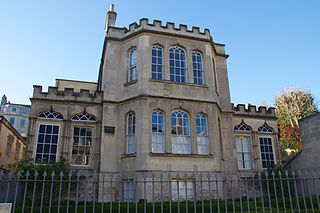
The Museum of Bath Architecture in Bath, Somerset, England, occupies the Countess of Huntingdon's Chapel, where it provides exhibits that explain the building of the Georgian era city during the 18th century.
18. Saint John the Evangelist RC
St. John the Evangelist Roman Catholic Church is located on the South Parade in the south-east section of Bath City Centre – the old Ham District where John Wood the Elder, the Georgian architect, had originally planned his gigantic "Forum".
19. No.1 Royal Crescent Museum
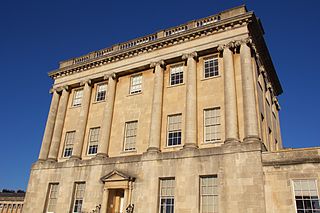
No. 1 Royal Crescent is the first building at the eastern end of the Royal Crescent in Bath, Somerset, and is of national architectural and historic importance. It is currently the headquarters of the conservation charity, the Bath Preservation Trust, and also operates as a public "historic house" museum displaying authentic room sets, furniture, pictures and other items illustrating Georgian domestic life both 'above stairs' and 'below stairs'. The house was the subject of a major renovation project during 2012 and 2013 which reunited No. 1 with its original service wing at No. 1A, from which it had been separated during the 20th century.
20. The Francis Hotel
The Francis Hotel is a four star hotel located in a Grade 1 listed building on the south side of Queen Square, Bath, Somerset, England. It was part of Accor's MGallery luxury boutique hotel collection. On 1st April 2022, the Francis Hotel left the Accor chain.
21. The Egg
The Egg is a theatre in Bath, built specifically for the use of young people. It was converted from a former cinema and church hall by architects Haworth Tompkins. The Grade II listed Victorian building houses the eponymous 'egg'-shaped auditorium, around which an arts cafe, rooftop rehearsal space and basement technical workshop are arranged. The idea was supported by the children's author Bel Mooney. It opened in October 2005. In 2007, the Peter Hall Company made use of the space in order to stage a production of George Orwell's Animal Farm.
22. The Empire
The Empire is a former hotel in Bath, Somerset, England, built in 1901 and designated as a Grade II listed building. It is situated on Orange Grove, close to both Bath Abbey and Pulteney Bridge and adjacent to the Old Police Station.
23. Church of St Luke and St Andrew
The Church of St Luke and St Andrew in Priston, Somerset, England has a nave dating from the 12th century, on the site of an earlier Norman church. It has been designated as a Grade I listed building.
Wikipedia: Church of St Luke and St Andrew, Priston (EN), Website
24. St Lawrence
The Anglican Church of St Lawrence in Stanton Prior, Somerset, England, has its origins in the 12th century but is mainly 15th century. The church has been designated by English Heritage as a Grade II* listed building.
Share
How likely are you to recommend us?
Disclaimer Please be aware of your surroundings and do not enter private property. We are not liable for any damages that occur during the tours.
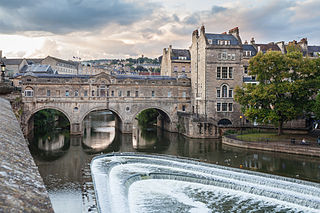
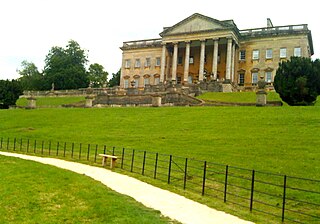
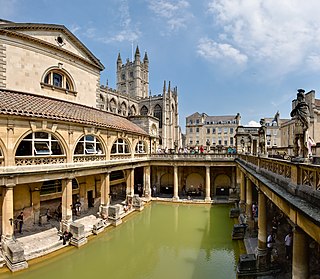
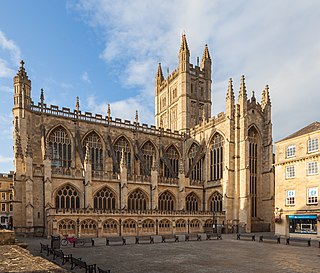
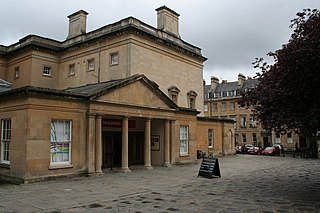
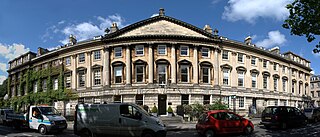
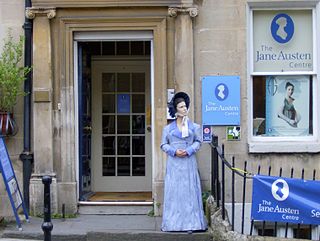
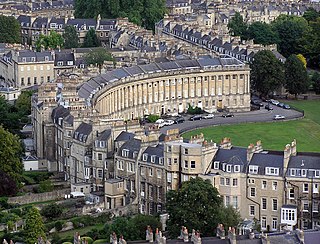
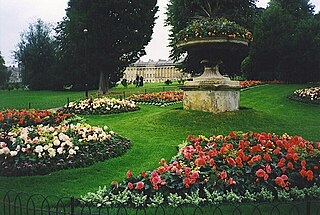
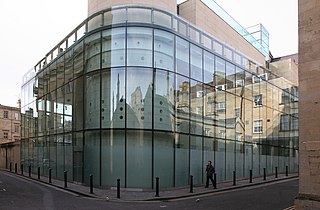
.jpg)
